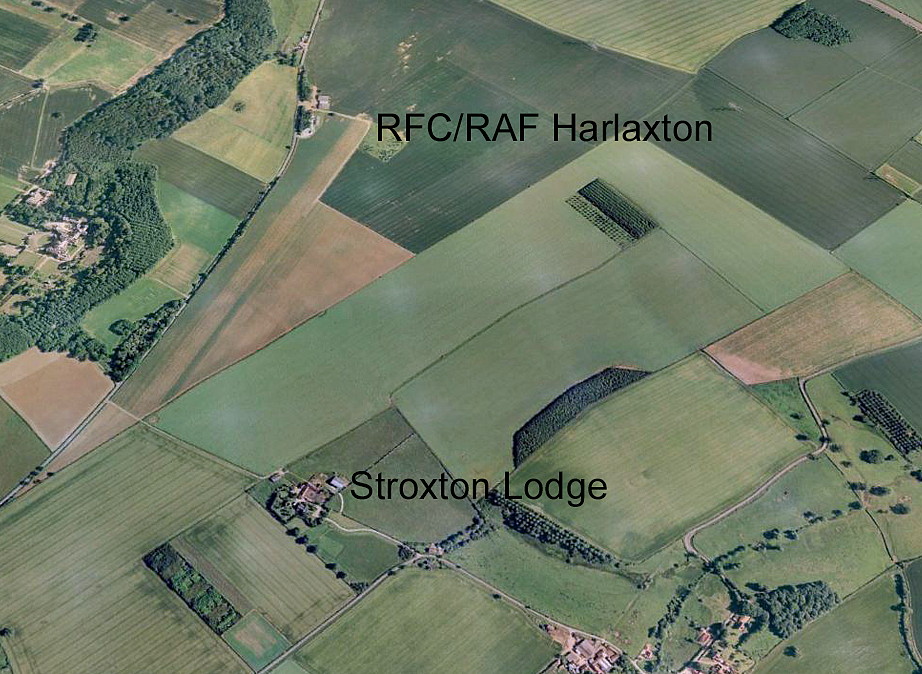Harlaxton
HARLAXTON: Military aerodrome
Military users: WW1: RFC/RAF
38 & 90 (Home Defence) Sqdns (1916 to 1919)
RFC/RAF Training Squadron Station and Training Depot Station (1916 to 1919)
98 Sqdn (Airco DH.9s?)
A MICHAEL T HOLDER GALLERY
Note: The last item, the local area view, is from my Google Earth © derived database.
WW2: RAF Flying Training Command 21 Group
12 FTS (Flying Training School)
Location: E of Harlaxton Manor, 2nm SW to S of Grantham
Period of operation: WW1: 1916 to 1919 WW2: 1942 to 1945
Site area: WW1: 386 acres (1234 x 1099 metres)
Runways: WW2: NNW/SSE 1189 grass WSW/ENE 1189 grass
SW/NE 1189 grass
NOTES: In his excellent book Fighter Heroes of WW1 Joshua Levine provides this account of a training flight by Eric Furlong: “My application to join the Royal Flying Corps was finally accepted in the middle of 1917. I was posted to the flying training station at Harlaxton in Lincolnshire. I didn’t tell them at first that I’d already learnt to fly in 1914. I thought that I would learn more if I kept quiet. Whereas in 1914, all my training had been done on solo machines, in 1917, the system was dual training with the instructor in the other seat."
"Well, the instructor realized on my first flight that I knew something about flying so he told me to take control. He didn’t like the way I turned using the rudder only, as I’d been taught. By 1917, training had progressed to proper banked turns. So he wrenched the controls out of my hand and said, ‘This is what I want! Do it like this, you see?’ and when we got to the next corner, he wrenched it out of my hands again and when we got to the last corner, I left it to him again. And then I just sat there and watched as we came gliding in."
"Wallop. We slapped into the ground and smashed the machine to smithers. He looked at me and said, ‘What did you do that for?’ I said, ‘I didn’t touch it!’ He said, ‘Neither did I!’ He thought I had control of the aeroplane and I thought he had control. That was my first landing in a Maurice Farman Longhorn.”
NOW A STANDARD METHOD
I wonder how long it took before it was standard practise for any two pilots, be they instructor and pupil, to always state out loud, “You have control?” I have often been complimented on my habit of saying out loud, for example, pre-landing checks, but that was how I’d been taught. I did it even when flying solo and remain convinced it is the best method. The same applies to en route checks. Say it out loud and then do it. For example I do think this is often why so many light aircraft pilots, (including instructors and a few commercial pilots - but not airline ATPL pilots I hasten to add), with a retractable undercarriage land with their undercarriage still retracted?
We'd love to hear from you, so please scroll down to leave a comment!
Leave a comment ...
Copyright (c) UK Airfield Guide





















